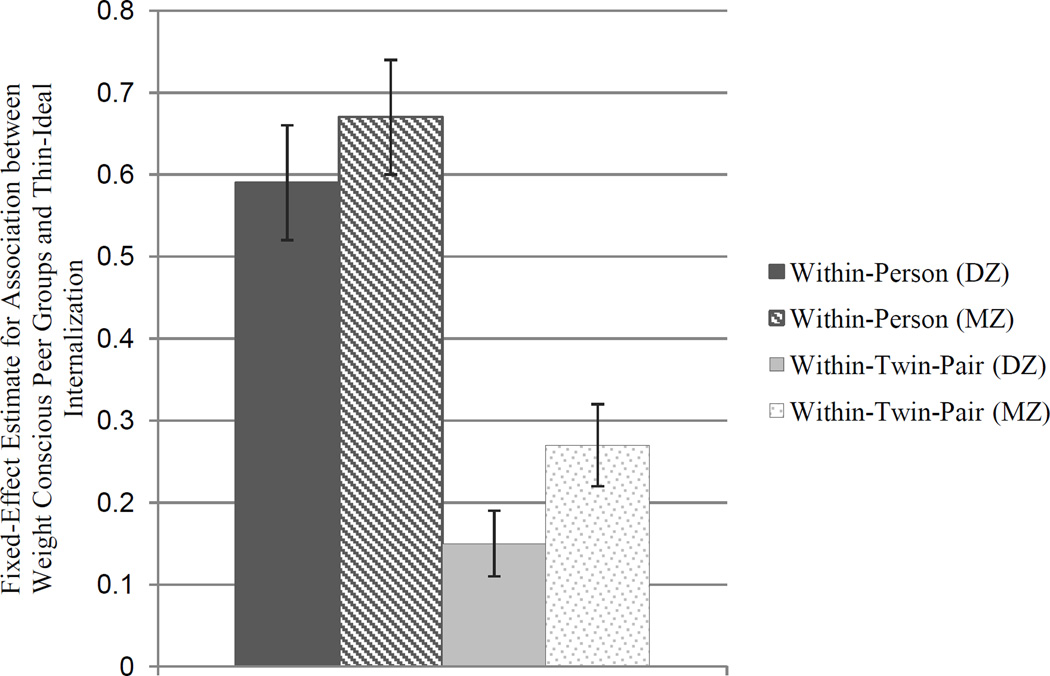Figure 2.
Graphical Depiction of Co-Twin Control Results. Graphical depictions of fixed-effect estimates for co-twin control results. Results are depicted for the weight conscious peer composite measure predicting thin-ideal internalization. Standard error bars are presented. When compared to hypothetical findings depicted in Figure 1, it can be seen that these findings resemble a combination of Scenario A, since the magnitude of all effects are greater than zero and statistically significant, as well as Scenario C, since the magnitude of within-twin-pair effects in both MZ and DZ twins is reduced as compared to within-person effects. These results suggest that a combination of Scenario A (socialization) and Scenario C (shared environmental and genetic selection effects or shared environmental selection effects only) underlies the association between weight conscious peer groups and thin-ideal internalization.

